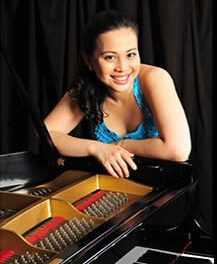With previous presentations in 2001, 2003, 2006, and 2010, Jean-Pierre Bonnefoux‘s setting of Serge Prokofiev’s Cinderella stands only behind the annual Tchaikovsky Nutcracker as North Carolina Dance Theatre‘s trustiest box office perennial. Nine performances are planned for the 2014 edition, giving balletomanes plentiful opportunities to enjoy the comedy and romance onstage – plus the precious glitter of the audience. On an exceedingly nasty winter night with a threat of sleet, my wife and I arrived just as the curtain was rising, yet even in the dim light, we could see the gleam of crowns and tiaras adorning the heads of young princesses schlepped through the rain by their heroic parents to see the iconic fairytale come to life. Rejecting the idea that all this headwear had been purchased before the performance at the gauntlet of Cinderella concessions in the lobby, I have to conclude that the regalia are holdovers from previous NCDT Cinderellas, family heirlooms, hand-me-downs from elder siblings, or artifacts from school theatricals, ballet recitals, and Halloween.
Alain Vaes‘ set design for the opening scene recalls the rusticity of the La Cenerentola we saw long ago at La Scala. That production in Milan yielded all of its broad humor without the aid of supertitles, the sure earmark of a story that’s perfect for ballet. Bonnefoux is now colorblind as well as gender blind in his casting of the terrible trio who oppress Cinderella, namely her stepmother and stepsisters. Each is more absurdly vain than the other as they choose fabrics for the dresses they will wear to the dreamy Prince’s ball. Amanda Smith, the more outré of the siblings, winds up with a ladybug dress topped with Valkyrie headgear, while the marginally more sedate Jamie Dee is encased in a darker abomination that makes her look like an eccentric card reader or an outright witch. But A. Christina Giannini’s most ornate atrocity is reserved for Mark Diamond, who has been Cinderella’s evil Stepmother since the youngest members of the company were still in middle school. Perhaps with some input from the man himself, the Stepmother’s rig makes him look like the Queen of Diamonds wearing a George Washington periwig, with enough frou-frou dangling from the skirt’s many folds to remind you of a gigantic Christmas tree ornament.
Summing up the great injustice of the household, David Morse shows up as the Dance Master toward the end of the opening scene and attempts to give the sisters and their mother some last-minute pointers before they depart for the palace. On stage right, we find an orgy of gawkiness while at the other end of the vast kitchen, Cinderella serenely and effortlessly mimics the Dance Master’s moves. Nobody notices but us, if we can take our eyes off the hilarious shenanigans and pratfalls. Time-sharing with the imperial Sarah Hayes Watson, Anna Gerberich was Cinderella on opening night, endearing with her delicate pixie quality.
The fairy godmother scene – with Melissa Anduiza in the key role – and the wedding (a scene that simply does not occur in the Prokofiev score – see below for more on this) attain a stature comparable to the Prince’s ball. Lights come up behind the kitchen, the rear wall flies upwards, and we’re in a magical garden as inspired by Gainsborough or Gruppe. Even before her enchanted send-off, Cinderella is set upon a throne to preside over a set of command performances by the fairies of Spring, Summer, Autumn, and Winter – with a special appearance midway by Jordan Leeper as Pan. Acknowledging all these tributes – with many to come via the Prince’s nobly spellbound admiration – poor Cinderella must work overtime simpering and blushing. Gerberich proves that she’s NCDT’s preeminent simperer, but I did eventually pity her for all her travails. Another nifty scene change occurs when the dormant kitchen fireplace somehow unfolds to become Cinderella’s pumpkin carriage, drawn in a rococo style that reminds me of the etchings by Fritz Eichenberg of Tsar Alexander and the King of Naples – on horseback – for War and Peace.
With Pete Leo Walker as the Prince (alternating with the superb Addul Manzano), the Palace scene was consistently crowned with his elegance. During a grand ensemble dance, he and Cinderella unaccountably lose track of one another in the crowd, reuniting blissfully after anxious exertions that call upon all your fairytale experience to believe. That in essence is their courtship, but the peak moment, after the Stepsisters make utter fools of themselves, is Cinderella’s ethereal arrival, afloat on the shoulders of a procession of courtiers. Until her arrival, the most charming interlude is the dance of the Puppets, another Bonnefoux insertion, six dancers dancing with lifesize puppets, including a female-female pairing.
While the stagehands are shifting the scenery from the palace back to the kitchen, Bonnefoux stages the Prince’s search for Cinderella as a rollicking puppet show, this time using handheld puppets on a mini-stage in front of the Knight’s drawn curtain. The show is festooned with two wondrous Circus Acrobats, László Major and Gregory DeArmond. Children flow in from the wings to watch as the Prince, clearly clueless, rides off to the pyramids of Egypt, the Parthenon in Athens, and the Taj Mahal in his epic quest. Maybe I’m underestimating the PC colorblindness of the kiddie audience, but wouldn’t it make sense when you’ve had a dark-haired Prince onstage to have a puppet that didn’t replicate the blond Prince Valiant?
The dénouement, uniting the lovebirds and humiliating her stepfamily, is doubly delicious for young and old. Somewhere borrowing – or repeating – music that occurs earlier, Bonnefoux manages to assemble a resplendent wedding scene for his Act III. The most wanted suspects from previous scenes return to the spotlight, the stage is cleared for a climactic pas de deux by Gerberich and Walker, and as the Fairy Godmother, Andulza reminds us of her divinity on pointe as the curtain descends amid a shower of silver confetti.
Last time I reviewed NCDT’s Cinderella, I was told that the cast included 103 dancers, including members of the NCDT 2 troupe, children, and apprentices from the NCDT School of Dance. Not one of them was out-of-step. Nor did any of the principals fall below the high standard set by previous lineups. While you ponder that, let me correct a mistake I made in my 2010 review by mentioning that Mark Diamond and Michael Vernon also contributed to the choreography fleshing out Bonnefoux’s concept. Amid all the grace and athleticism that paraded before me, what most grabbed my attention were the two prime spots reserved for the students. The liveliness and joyous precision of the six Dancing Puppets, all of them students, made a strong impression to be sure, but the sophistication and synchronicity of the ten kids who danced the “Children’s Waltz” left me amazed.
The delights continue through March 16. For details, see the sidebar.
P.S. The music is recorded with the performance not credited in the program.













